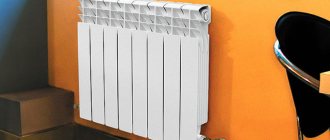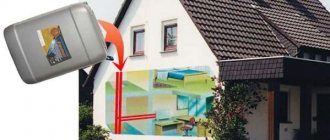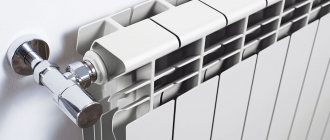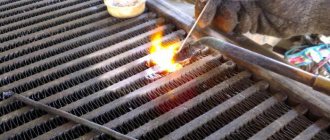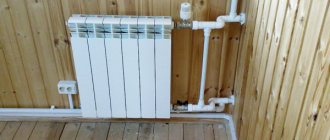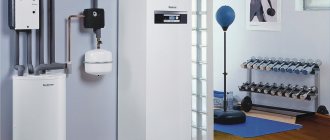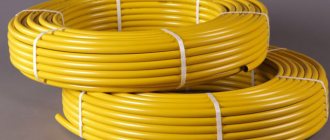Sometimes residents of the private sector make a very serious mistake when they install autonomous heating with aluminum radiators and do not think about the fact that in such cases ordinary water is not suitable as a coolant.
In addition, such a liquid is not the only one of its kind - there are different options and you cannot do without it, because ordinary water with its salts and alkalis will destroy aluminum, and this, of course, will not suit you, so in any case you need look for a way out.
Aluminum radiators
We will now tell you about the different types of this drug, the conditions for its use, and also invite you to watch the video in this article.
Types of coolant
Water is the most popular and accessible coolant for water heating circuits. However, due to its use as a coolant for aluminum heating radiators, the metal begins to rust, and scale and deposits appear inside the pipes. Therefore, such systems require periodic flushing and cleaning. Also, during winter shutdowns, there is a real danger of freezing: in such cases, it is necessary to drain the water. If this is not done, freezing of the liquid will certainly lead to rupture of pipes and batteries.
All this indicates that, in addition to correctly calculating the power of the batteries for the room, it is important to use exactly the coolant that is not afraid of freezing and chemical interaction with metal walls. It is important to keep in mind that such special solutions do not have a negative impact on human health when the circuit leaks. We are talking about antifreeze: this coolant is not afraid of low temperatures, which is facilitated by additives and additives dissolved in the liquid, which act as inhibitors of corrosion and mineral deposits.
Types and properties of heat-carrying liquids
The working fluid of any water system - the coolant - is a liquid that takes a certain amount of energy from the boiler and transfers it through pipes to heating devices - radiators or underfloor heating circuits. Conclusion: the efficiency of heating depends on the physical properties of the liquid mediator - heat capacity, density, fluidity, and so on.
In 95% of private houses, ordinary or treated water is used with a heat capacity of 4.18 kJ/kg•°C (in other units - 1.16 W/kg•°C, 1 kcal/kg•°C), which freezes at a temperature of about zero degrees. The advantages of traditional heating fluid are availability and low price, the main disadvantage is the increase in volume when frozen.
Crystallization of water is accompanied by expansion; cast iron radiators and metal-plastic pipelines are equally destroyed by ice pressure
The ice that forms in the cold literally splits pipes, boiler heat exchangers and radiators. To prevent the destruction of expensive equipment due to defrosting, 3 types of antifreeze made on the basis of polyhydric alcohols are poured into the system:
- Glycerin solution is the oldest type of non-freezing coolant. Pure glycerin is a transparent liquid of high viscosity, the density of the substance is 1261 kg/m³.
- An aqueous solution of ethylene glycol - dihydric alcohol with a density of 1113 kg/m³. The starting liquid is colorless and is inferior in viscosity to glycerin. The substance is toxic, the lethal dose of dissolved glycol when taken orally is about 100 ml.
- The same, based on propylene glycol - a transparent liquid with a density of 1036 kg/m³.
- Compositions based on the natural mineral - bischofite. We will analyze the characteristics and features of this chemical separately (below in the text).
Reference. Any non-freezing heating fluid contains a dye that gives the chemical a distinctive color. Poisonous ethylene glycol is usually colored red or yellow, propylene glycol is green (less often blue). Glycerin antifreeze is given a pink tint or left transparent. This classification is not mandatory and is not always observed.
Anti-freeze products are sold in two forms: ready-made solutions designed for a certain subzero temperature (usually -30 ° C), or concentrates, which the user dilutes with water himself. Let us list the properties of glycol antifreezes that affect the operation of heating networks:
- Low crystallization temperature. Depending on the concentration of polyhydric alcohol in an aqueous solution, the liquid begins to freeze at a temperature of minus 10...40 degrees. The concentrate crystallizes at 65 °C below zero.
- High kinematic viscosity. Example: for water this parameter is 0.01012 cm²/s, for propylene glycol - 0.054 cm²/s, the difference is 5 times.
- Increased fluidity and penetrating ability.
- The heat capacity of non-freezing solutions lies in the range of 0.8...0.9 kcal/kg °C (depending on concentration). On average, this parameter is 15% lower than that of water.
- Aggressiveness towards some metals, such as zinc.
- The substance foams when heated and quickly decomposes when boiling.
Propylene glycol antifreeze is usually colored green, and the prefix “ECO” is added to the marking.
In order for antifreezes to meet operational requirements, manufacturers add additive packages to glycol solutions - corrosion inhibitors and other elements that maintain antifreeze stability and reduce foaming.
Pros and cons of aluminum radiators
The popularity of aluminum batteries is explained by the following advantages of the products:
- Light weight. The weight of one section does not exceed 2 kg.
- Cheapness. Aluminum is a common metal that is easy to process.
- Easy installation and maintenance. The coating is heat-resistant paint that is easy to clean.
- Excellent decorative characteristics.
- High level of heat transfer. This is facilitated by additional ribs with thin walls. According to this indicator, aluminum radiators are almost 3 times superior to conventional cast iron batteries.
- Compact sizes.
- Fast response to temperature switching due to the low thermal “inertia” of aluminum.
Weaknesses of aluminum radiators:
- Very sensitive to the composition of the coolant (hardness, mineralization). Poor water quality often causes equipment failure. Therefore, deciding which antifreeze is best for a radiator must be taken seriously.
- Tendency to corrosion. Design, installation and repair must be carried out very carefully.
- Working pressure restrictions.
- High probability of formation of air pockets due to the chemical activity of the metal with salts dissolved in water
The choice of coolant for aluminum radiators must be done very carefully.
Antifreeze as a coolant
When solving the problem of which coolant to choose for aluminum radiators, it is important to find a specific composition intended specifically for the intended use.
It is important to consider the following disadvantages of antifreeze liquid for aluminum radiators:
- Low level of thermal capacity (inferior to water by almost 115%).
- A circulation pump is required. Without it, the system will not work due to the high viscosity of the antifreeze, which creates additional obstacles to the movement of the coolant along the circuit.
- Noticeable increase in volume when heated.
- Very high fluidity (50% more than water). Because of this, special attention has to be paid to welded (solder) and threaded connections.
- The toxicity of some compounds. We are talking, first of all, about ethylene glycol antifreeze, which must not be used in combination with hot water supply.
Instructions for use
If your system previously ran on water, switching to antifreeze will not be easy. Theoretically, radiators with a boiler can be emptied and filled with cold-resistant coolant, but in practice the following will happen:
Addition. After filling the liquid, the old connections sealed with flax and paint are guaranteed to flow.
In order for heating to function normally using a chemical coolant, you need to calculate in advance or remake the existing system according to the new requirements:
- Select the capacity of the expansion tank at the rate of 15% of the total volume of liquid (water was 10%);
- The pump performance is assumed to be 10% more, and the generated pressure is assumed to be 50% more. Let us explain with an example: if previously there was a unit with a working pressure of 0.4 Bar (4 meters of water column), then use a 0.6 Bar pump for antifreeze.
- In order to operate the boiler in optimal mode and not raise the temperature of the coolant, it is advisable to add 1-3 (depending on power) sections to each battery.
- Pack all joints with dry flax or use high-quality pastes - sealants such as LOCTITE, ABRO or Hermesil.
- When purchasing shut-off and control valves, consult with the seller about the resistance of rubber seals to glycol mixtures.
- Pressure test the system again by filling the pipes and heating equipment with water.
- When starting the boiler unit at negative temperatures, set the minimum power. Cold antifreeze needs to be warmed up slowly.
Advice. The total amount of coolant is easy to calculate - the cross-sectional area of the pipe is multiplied by its length, the capacity of the boiler and radiators is indicated in the product data sheets. Find out how to properly place and connect the expansion tank in our separate publication.
The concentrated coolant must be diluted with water, ideally with distillate. Do not rely on an excessive reserve of frost resistance - the more water you add, the better the heating will work. Recommendations for preparing coolant:
- For heating elements, electric and gas double-circuit heat generators, prepare the mixture at minus 20 degrees. A more concentrated solution may foam upon contact with the heater, and carbon deposits will form on the surface of the heating element.
- In other cases, mix the components at freezing point according to the table below. Proportions are indicated per 100 liters of coolant.
- If there is no distillate, first conduct an experiment - dilute the concentrate in a jar with plain water. If you see a precipitate of white flakes - a product of the decomposition of inhibitors and additives, this water should not be used.
- A similar check is done before mixing antifreeze from two different manufacturers. It is unacceptable to dilute ethylene glycol with propylene composition.
- Prepare the coolant immediately before pouring.
The ratio of concentrate and water is given per 100 liters. To find out the amount of ingredients for a volume of 150 liters, multiply the given figures by a factor of 1.5
The maximum service life of any antifreeze substance in pipes and heating radiators is 5 years. At the end of the specified period, the liquid is drained, the system is flushed twice and filled with fresh antifreeze.
Ethanol compounds
The significant cost of this antifreeze for aluminum radiators often becomes a serious obstacle to its use in private autonomous systems. The composition can be obtained from distilled water and 40% ethanol (ethyl alcohol). The quality of such a solution is superior to the factory analogue in certain parameters. The matter mainly concerns its low viscosity (although compared to water it remains quite high). There is also a decrease in fluid fluidity, which makes it possible to be less demanding on the connecting areas.
The use of homemade ethanol antifreeze for heating radiators has a beneficial effect on the safety of the rubber sealing gaskets that are present in any circuit. It is recommended to dilute alcohol with hard water: in combination with ethanol, it will become a serious obstacle to the formation of scale on the inner walls. In this case, you cannot do without solid sediment, but you can easily get rid of it by flushing the system. In cases where the percentage of ethyl alcohol in water does not exceed 30%, it will not evaporate.
Due to the fact that the coolant for aluminum radiators is similar in its characteristics to water, its boiling point is approximately the same as that of water. This suggests that when the temperature reaches + 85-90ᶷ, no steam release will be observed. Thanks to ethanol, the thermal expansion of water is reduced by an order of magnitude, which allows the system to more comfortably tolerate lower temperatures in the room.
Choosing an “anti-freeze” for heating
Tip number one: buy and fill in antifreeze only in extreme cases - for periodic heating of remote country houses, garages or buildings under construction. Try to use water - regular and distilled, this is the least troublesome option.
When choosing a frost-resistant coolant, follow the following recommendations:
- If your budget is limited, take ethylene glycol from any well-known brand - “Teply Dom”, Dixis, Spektrogen Teplo Coolant, Bautherm, Termo Tactic or “Thermagent”. The cost of the concentrate -65 °C from Dixis is only 1.3 USD. e. (90 rubles) per 1 kg.
- If there is a danger of antifreeze getting into household water (for example, through an indirect heating boiler, double-circuit boiler), or you are very concerned about the environment and safety, buy harmless propylene glycol. But keep in mind: the price of the chemical is higher; a ready-made Dixis solution (minus 30 degrees) will cost 100 rubles (1.45 USD) per kilogram.
- For large heating systems, we recommend using premium class HNT coolant. The liquid is made on the basis of propylene glycol, but it has an increased service life of 15 years.
- Do not buy glycerin solutions at all. Reasons: sedimentation in the system, too high viscosity, tendency to foam, a large number of low-quality products made from technical glycerin.
In the light of the flashlight, tiny white flakes are visible - a sediment of technical glycerin
- Electrode boilers require a special liquid, for example, HNT-35. Before use, be sure to consult with a representative of the manufacturer.
- Do not confuse automobile antifreezes with chemicals used in heating systems. Yes, both formulations are glycol-based, but the additive packages are completely different. Engine coolant is not compatible with residential water heating.
- For open and gravity-flow heating systems, it is better to use water, or, in extreme cases, propylene glycol diluted at minus 20 °C.
- If the heating distribution is made with galvanized pipes, there is no point in purchasing glycol mixtures. The substance will deal with zinc, lose the package of additives and quickly degrade.
Clarification. It is not profitable to use frost-resistant liquid for an open heating system. Hot antifreeze will evaporate into the atmosphere through the expansion tank, the antifreeze will have to be constantly topped up, and money will be spent. It is unacceptable to pump in ethylene glycol, since its vapors are toxic.
There is a lot of debate about the harmfulness of ethylene glycol compounds, including on the pages of construction forums. Without denying the harmful effects of the chemical on human health, let us draw attention to a convincing fact.
Homeowners whose closed systems are installed well have been using inexpensive glycol for years without any problems. Let's listen to the expert's opinion in the video:
What proportions to use
It is important to understand that to lower the freezing point it is necessary to increase the percentage of ethanol in the solution:
- When the indicator drops to -10.6 degrees, ethyl alcohol must be present in an amount of at least 20.3%.
- When the temperature drops to -23.6 ᶷ degrees, the share of ethanol increases to 33.8%.
- At a temperature of -28.7 degrees, alcohol is added in a volume of 39% alcohol.
- At a temperature of -34 degrees - 46.3%.
It should be taken into account that one liter of 96% ethylene contains 960 ml of anhydrous alcohol. Therefore, to obtain a 33% solution, you will need 96/33 = 2.9, that is, 2.9 liters of distilled water. That is, to make a 33% solution you need one liter of ethyl alcohol and 2.9 liters of distilled water. The antifreeze obtained in this way for heating can be safely poured into a circuit with aluminum radiators, because it will retain its fluidity even at -22 degrees below zero.
There are certain restrictions on the use of homemade and factory-made non-freezing coolants for bimetallic radiators:
- It is strictly forbidden to use antifreeze in heating circuits with electrolysis boilers.
- Antifreeze cannot be used in open heating systems. We are talking primarily about toxic ethylene glycol compounds.
- It is not advisable to allow the liquid temperature to drop below -20 ᶷC. This significantly deteriorates the quality of the additives used, which provokes the formation of scale on the internal walls.
- In systems with antifreeze, it is prohibited to use flax tow placed on the paint. Under the influence of ethyl alcohol, it quickly disintegrates, which leads to depressurization of the connection. It is best to use Unipak plumbing paste in such cases.
- Antifreeze liquids have a destructive effect on galvanized elements.
Alcohol as a coolant.. (need advice)
I duplicate my earlier message here, now with the addition of the article: Ethylene glycol, which is part of antifreeze, when it enters the human body becomes “poison” (belongs to the third danger group) - a one-time “dose” of only 100 ml can be a lethal dose for an adult of this substance. Ethylene glycol vapors are also harmful to health. That is why antifreezes on this basis are recommended for use exclusively (!) in closed heating systems (with a closed expansion tank). If the system is open (an open expansion tank is used), the solution is to use antifreeze not based on ethylene glycol, but based on PROPYLENE GLYCOL
Article **Reefs and shoals of the sea Antifreeze**
“SHOULD OR NOT POUR antifreeze into the heating system?” - 99% of owners of individual houses ask this Hamlet question, but, like the unfortunate prince, they do not find an answer. We dare to say that there is no clear answer to this question. Antifreeze is a special coolant for liquid heating systems. There are many types of antifreeze. They are based on aqueous solutions of various substances: salts, alcohols, ethylene glycol, propylene glycol, etc., to which additives are added that correct the physical properties of these solutions. Their main advantage is their low freezing point. In Russia, the most widely used antifreezes are based on an aqueous solution of ethylene glycol - NORT, DIXIS, Hot Blood. Concentrated solutions of them have a crystallization temperature of up to – 68 C. By changing the ratio of concentrate and water, you can obtain a liquid with a freezing point from – 10 ° to – 65 ° C. In addition, when cooling antifreeze, there is a gap between the temperature at which crystallization begins and the temperature at which the solution finally solidifies a significant temperature range within which both ice crystals and liquid are present. This state of the solution is called “sludge”. For example, with a 35% concentration of ethylene glycol in the solution, the antifreeze will be in a “sludge” state in the temperature range from – 20° to – 30° C, which eliminates the “rupture” of the system at these temperatures. Antifreeze contains a set of various additives - additives that should give it additional useful qualities - protect the metals included in the heating system from corrosion; dissolve and remove formed sediments and scale; prevent the destruction of seals - rubber, Teflon, paronite, sealants... The set of these additives determines the characteristics of a particular brand of antifreeze. The need for antifreeze in modern Russia is very high, because... cutting off electricity in populated areas for a long period of time and without warning is the corporate style of Anatoly Borisovich’s department. The losses of home owners from such shutdowns in winter can be calculated in amounts with many zeros. It would seem that there is a solution - fill in antifreeze and live in peace! But why then do all serious manufacturers of heating boilers not recommend using antifreeze in their products? Thus, the Slovak “PROTERM” warns: “...cast iron boilers are not designed to work with non-freezing liquids...the manufacturer is not responsible for problems caused by the use of antifreeze.” The German “VAILLANT” states categorically: “...the use of non-freezing liquids in wall-mounted boilers is unacceptable!” Less scrupulous manufacturers are more cunning. For example, they state that their products use gaskets made of paronite, which is compatible with many types of antifreeze, while keeping silent about the fact that the material of the seals is not the only problem when using antifreeze. Advertising brochures and articles, not to mention salespeople in stores, never inform customers about any restrictions on the use of antifreeze in boiler equipment. However, in the passports for the equipment of the manufacturing company, they always emphasize that the coolant is only water. (The passports, however, are carefully read after purchasing the boiler). However, we will forgive the sellers - they need to sell the goods. Our task is to provide our customers with objective information - “forewarned is forearmed.” What is the essence of the problems associated with the use of antifreeze in heating systems? First. Antifreeze is a substance whose physical properties differ significantly from the physical properties of water. This is the price paid for the low freezing temperature. The heat capacity of antifreeze is 15–20% less than that of water; viscosity is 2 – 3 times higher; volumetric expansion is greater by 40 - 60%, Moreover, these values change with changes in the concentration of the solution and are different for different manufacturers. The values of thermal conductivity, boiling point, and other physical characteristics also differ. In practice, this means that if you intend to use antifreeze in the heating system, you must make changes to the design of the heating system in advance, because all design calculations are based on the physical properties of water, not antifreeze. It will be necessary to increase the thermal power of the radiators by 40 - 50%, increase the volume of the expansion tank by 40 - 50%, increase the pressure of the circulation pump by 60%, change a number of other parameters of the heating system, including the boiler power. Obviously, the cost of the equipment will have to be adjusted. Second. Ethylene glycol-based antifreezes are quite critical to extreme operating conditions of heating systems, especially overheating. If the temperature of the water in the system, even at any one point, exceeds the critical value for a given brand of antifreeze, thermal decomposition of ethylene glycol and anti-corrosion additives will occur with the formation of acids and solid precipitation. If precipitation falls on the heating elements of the boiler, “carbon deposits” are formed, which leads to a deterioration in heat transfer in this area of the heating element, to the formation of new deposits and to further overheating of these areas. Acids formed as a result of the thermal decomposition of ethylene glycol begin to interact with the metals of the heating system, provoking their corrosion. Thermal decomposition of additives can lead to the loss of the protective properties of antifreeze in relation to the sealing material - rubber, paronite, etc. and cause leaks at connections. The use of pipelines with an internal zinc coating is prohibited. Finally, overheating of antifreeze causes it to “foam” i.e. increased foaming, which leads to airing of the system. From the above it is clear that the biggest danger for ethylene glycol antifreeze is overheating. This undesirable phenomenon can be eliminated only by carefully monitoring the operating modes of the boiler and heating system. Unfortunately, this is not always possible. It is clear why manufacturers of boiler equipment do not allow the use of antifreeze - it is impossible to correctly design a boiler without knowing the physical properties of the coolant. Third. Antifreezes have the property of increased permeability or fluidity. The more threaded connections, gaskets, and seals, the greater the likelihood of leaks. The tricky thing about antifreeze is that leaks often appear when the heating is turned off and the system has cooled down. Due to cooling, the volume of metal compounds decreases and, as a result, microchannels appear through which antifreeze begins to ooze. For this reason, all connections in the heating system must be accessible for inspection and repair. Under no circumstances should they be hidden under plaster, cladding or in a monolith. Antifreezes based on ethylene glycol are toxic, so they cannot be used to heat water in hot water systems, where if the heat exchangers are leaking, they can get into hot water distribution points, and their vapors should not penetrate into living spaces. Ignoring the listed features and properties of antifreeze when using them in heating systems can lead to a noticeable decrease in the efficiency of the system and a decrease in the service life of the equipment. Currently, new generation antifreezes are becoming increasingly widespread in Russia. These are propylene glycol antifreezes, well known in Europe since the late 90s of the last century. These antifreezes are based on an environmentally friendly substance - food-grade propylene glycol. These antifreezes are absolutely harmless and can be used in double-circuit heating systems and in refrigeration units in the food industry. Their thermal and hydraulic characteristics are similar to those of ethylene glycol antifreeze, but they are less aggressive to metals and materials of heating systems. It is characteristic that many leading manufacturers of heating boilers have already permitted the use of propylene glycol antifreeze in their boiler equipment. Despite the rather high price, propylene glycol antifreezes have a real prospect of firmly establishing themselves in the Russian market of antifreeze liquids. Currently, both types of antifreeze under different brands are already produced at several Russian enterprises.
Is there an alternative to antifreeze? Yes, it exists. Firstly, this is the construction of heating systems with electrically independent boilers. Such boilers, both domestic and foreign, are well known. Their use, however, imposes certain restrictions on the design of the heating system. Secondly, the use of backup power sources. They come in battery and electric generator types. Battery sources consist of a car battery, a charger and a voltage converter. When the power supply stops, the device automatically turns on and ensures the heating system is operational for up to 8 - 10 hours of continuous operation. The duration of this period depends on the power of the electrical devices of the heating system, the battery capacity and can be increased by adding additional batteries. When the power supply is restored, the device automatically switches to battery charging mode. The cost of such devices starts from 100 USD. They do not require separate premises and qualified maintenance. Electric generator power supplies (mini-power plants), if fuel is available, provide unlimited operating time, but are much more expensive, require a separate room and are more difficult to operate. When deciding which coolant to choose, you need to imagine how likely a long (day or more) power outage is in your area. If such an event is unlikely (your house is located in a comfortable locality with a developed engineering infrastructure), it is better to fill the heating system with water and install a battery uninterruptible power supply. You will maintain the stability of the heating system parameters and extend the service life of the boiler equipment. If your cottage community is located in an “open field”, “hangs” on one cable and outages can last for days, it is better to fill it with antifreeze. At least the equipment in which you have invested more than one thousand dollars will not have to be scrapped. When pouring antifreeze, check whether it precipitates when mixed with water. If yes, then use distilled water. Never pour antifreeze into galvanized pipes. When interacting with zinc, the water-glycol mixture forms a heavy sediment, which can damage the heating system. It is not recommended to dilute antifreeze by more than 50% - this will lead to a deterioration in its anti-corrosion properties. Antifreeze ages, so it must be replaced at intervals specified by the manufacturer (4 - 5 years), flushing the system with special compounds. In conclusion, we can only repeat what was said at the very beginning: “there is no clear answer....” Each homeowner must decide for himself which coolant to use, carefully weighing the pros and cons. In fairness, it should be noted that during the entire period of active use of ethylene glycol antifreeze in Russia, no serious accidents of boiler equipment caused by antifreeze have been recorded. (Maybe the devil is not as scary as he is painted?) In any case, taking into account the physical properties of antifreeze and following the above recommendations for their operation will reduce the negative consequences of their use to an acceptable minimum
Results
Discussions on the topic of whether it is possible to pour antifreeze into aluminum radiators brought very specific answers. Responsibility for choosing a coolant lies entirely with the owners of the household. When considering various liquid options, one should keep in mind one more feature of systems filled with antifreeze coolant. If the operating temperature regularly exceeds the limit of +70ᶷ degrees, it is better to refrain from using antifreeze solutions, because because they have a very high expansion due to the alcohol content. This is fraught with pipeline ruptures and damage to heating devices.
